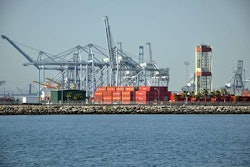The U.S. Department of Transportation announced $77 million in grants to 22 University Transportation Centers to advance research and education programs that address critical transportation challenges. The UTCs, which are located throughout the United States, conduct research that directly supports the priorities of DOT. “Transportation matters in everyone’s daily life,” says U.S. Transportation Secretary Ray LaHood. “These research centers will help us solve the transportation challenges we face today and those that we know lay ahead of us.”
DOT’s Research and Innovative Technology Administration, which administers the UTC program, used a competitive selection process to select 10 UTCs, two transit-focused UTCs and 10 regional UTCs. The centers will advance U.S. transportation technology and expertise in research, education and technology transfer. Each one of the selected UTCs will receive a $3.5 million grant, which they must match with funds from nonfederal sources. The 22 UTCs selected are all consortia, involving a total of 121 different universities.
“We are excited about the proposals these consortia put forward,” says RITA Acting Administrator Greg Winfree. “They have the potential to advance basic and applied transportation research today and ensure a robust pipeline of professionals for the transportation work force of tomorrow. It is absolutely crucial that we continue to invest in research, which has the added benefit of attracting and developing the high level of professionals needed for innovation and expertise in transportation.”
UTCs work with regional, state and local transportation agencies to help find solutions to challenges that directly impact their communities and affect the efficiency of the nation’s transportation system. UTC projects are peer-reviewed, and the results of their work are shared with the national transportation community to encourage greater progress through collaboration. The selected universities will research a wide range of transportation-related issues, including shared rail corridors, innovations in multimodal freight and infrastructure, bridge inspection methods and reducing roadway fatalities and injuries.











